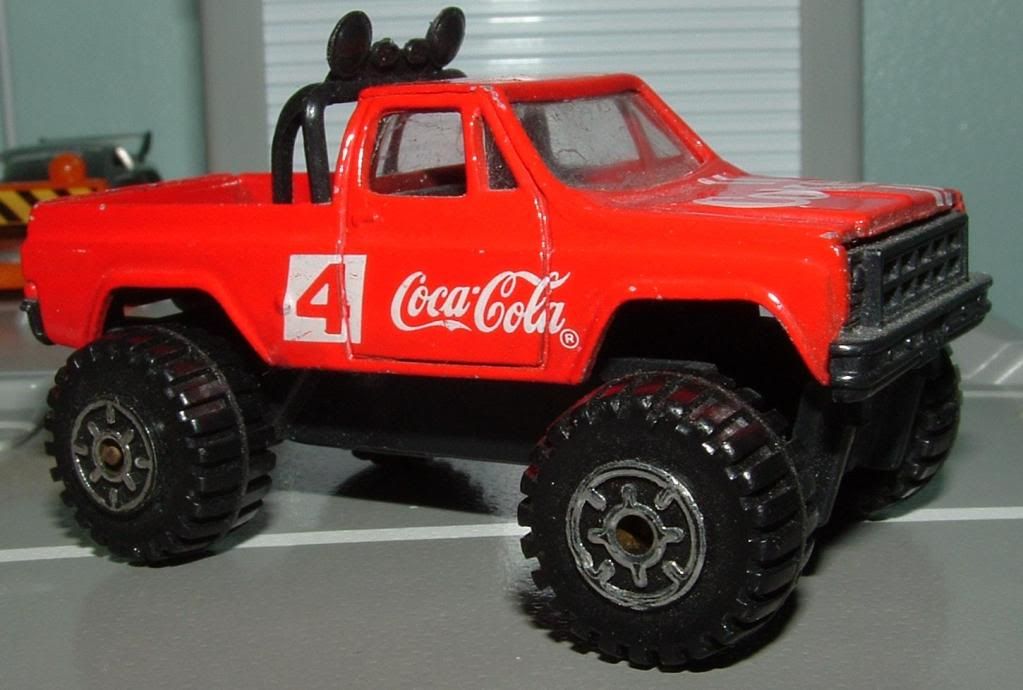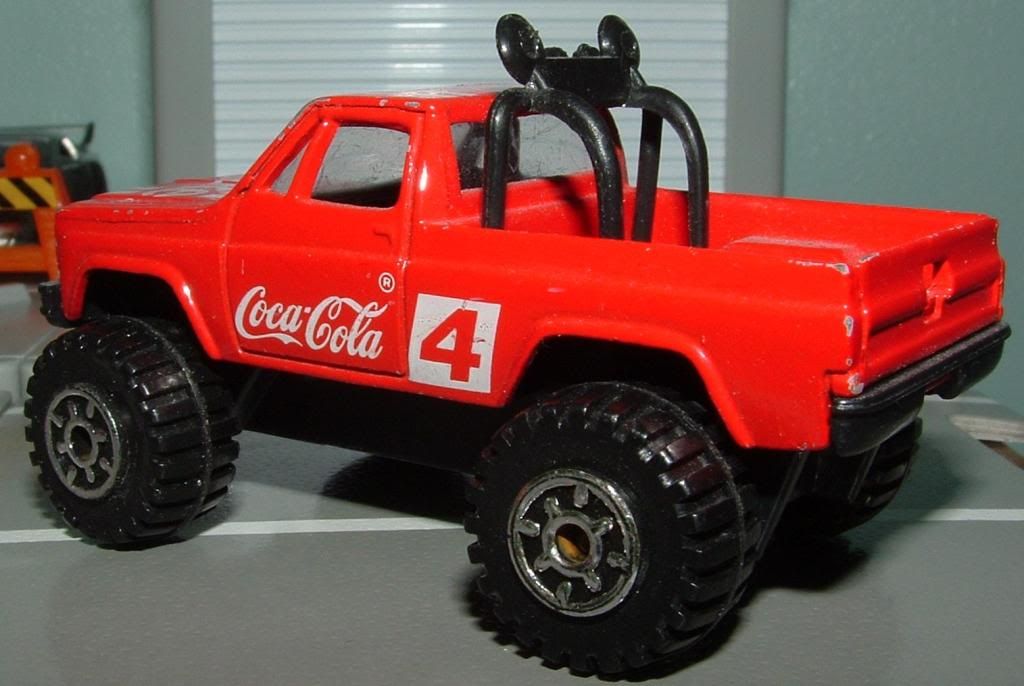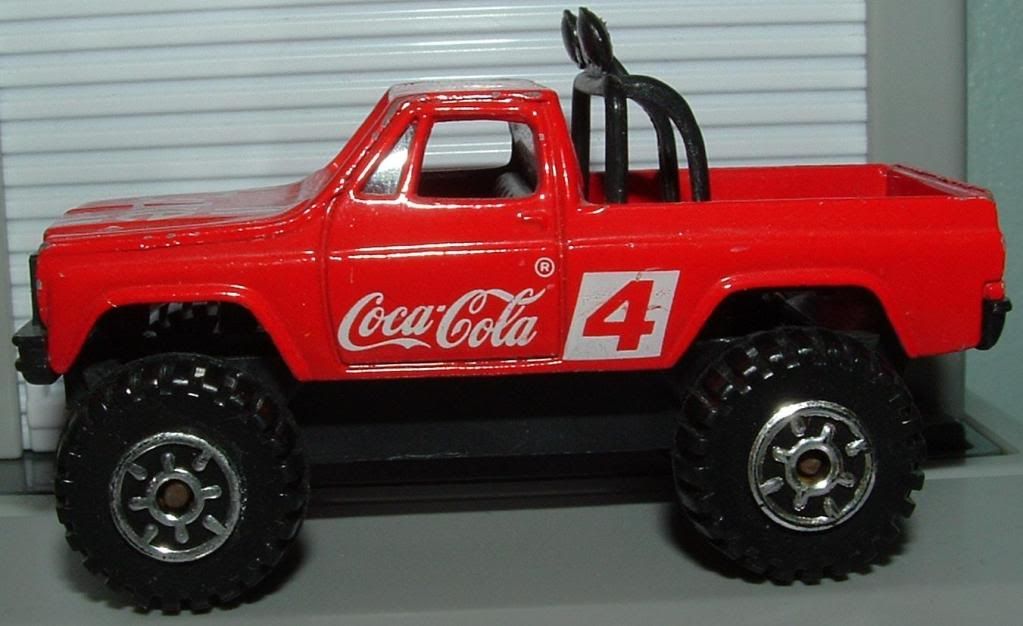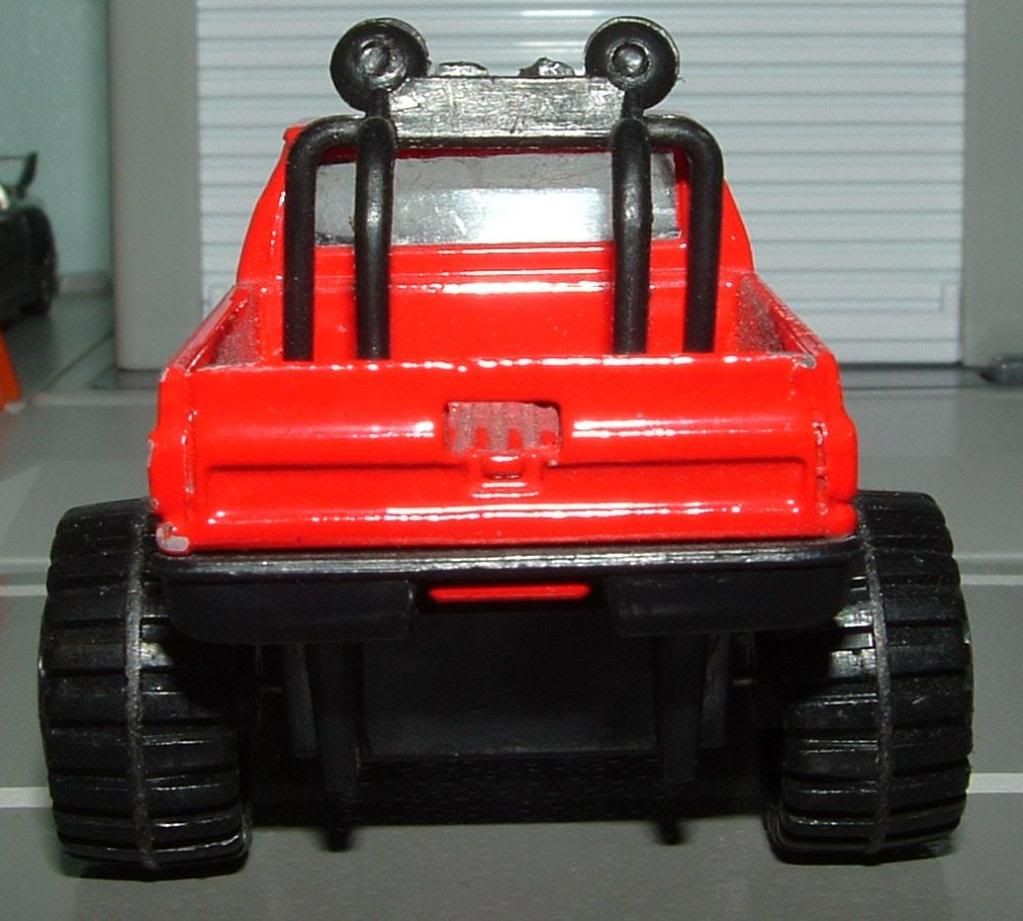
A blog focusing on 1/64 diecast from such popular brands as Hot Wheels, Matchbox, Johnny Lightning, M2 Machines, GreenLight, Tomica, Yat Ming, Majorette, MotorMax, Siku, Corgi, Guisval, Playart, Ertl, Zylmex, Racing Champions, & many more. Swifty's Garage features a daily Car Of The Day and news updates from your favorite brands!
Saturday, May 21, 2011
Truck Of The Day: May 21, 2011
Today's car of the day is Hartoy's 1980 GMC K15 Sierra Grande.
The C/K is the name for Chevrolet and GMC's full-size pickup truck line from 1960 until 1999 in the United States, from 1965 to 1999 Canada, from 1964 through 2001 in Brazil, and from 1975 to 1982 in Chile. The first Chevrolet pickup truck appeared in 1924, though in-house designs did not appear until 1930. "C" denoted two-wheel drive while "K" denoted four-wheel drive. The C/K light-duty pickup truck was replaced with the Chevrolet Silverado and GMC Sierra in 1999 in the US and Canada, and 2001 in Brazil; the Chevrolet Silverado HD and GMC Sierra HD heavy-duty pickup trucks followed in 2001.
For the first Chevrolet C Series, made from 1911 to 1913, see Chevrolet Series C Classic Six, (the first Chevy).
For more information and pictures of the real car please visit: GMC Sierra Grande
The Chevrolet/G<C pickups of the late '70s and early '80s were quite popular in 1/64 with examples from Hot Wheels (Bywayman), Hartoy, Kidco/Universal, Yat Ming, and more.
An all-new clean sheet redesign of General Motor’s (GM) Chevrolet and GMC brand C/K-Series pickups débuted in 1972 for the 1973 model year. Development of the new third generation trucks began in 1968, four years prior to production in 1972, with vehicle components undergoing simulated testing on computers, before the first prototype pickups were even built for real world testing. The redesign was revolutionary in appearance at the time, particularly the cab, departing from typical American pickup truck designs of the era. As a result, the third generation quickly became known as the "rounded-line" generation; although some people refer to them as "square bodys", given that the trucks appear square-like by more modern standards.
GM's design engineers fashioned the "rounded-line" exterior in an effort to improve aerodynamics and fuel efficiency, using wind tunnel technology to help them sculpt the body. Third generation design traits include "double-wall" construction, sleek sculpted body work, flared secondary beltline and a aerodynamic cab which featured rounded doors cutting high into the roof and steeply raked windshield featuring an available hidden radio antenna embedded into the glass.
There were two types of pickup boxes to choice from. The first type, called "Fleetside" by Chevrolet and "Wideside" by GMC, was a "double-wall" constructed full width pickup box and featured a flared secondary beltline to complement the cab in addition to new wraparound tail lamps. Both steel and wood floors were available. The second type, called "Stepside" by Chevrolet and "Fenderside" by GMC, was a narrow width pickup box featuring steps and exposed fenders with standalone tail lamps. Initially, only wood floors were available.
The wheelbase length was extended to 117.5 in (2985 mm) for the short wheelbase pickups, and 131.5 in (3340 mm) for the long wheelbase pickups. A new dual rear wheel option called "Big Dooley" was introduced on 1-ton pickups, along with a new Crew Cab option on the 164.5 in (4,178 mm) wheelbase. Crew Cabs were available in two versions: a "3+3" which seated up to six occupants and "bonus cab" which deleted the rear seat and added rear lockable storage in its place. The fuel tank was moved from the cab to the outside of the frame, and a dual tank option was available which brought fuel capacity to 40 US gallons.
The rounded-line generation ultimately ran for a lengthy 15 model years (1973–1987) with the exception of 1-ton and Blazer, Jimmy, and Suburban versions, which continued up until the 1991 model year.[/quote]
[url=http://i78.photobucket.com/albums/j120/swiftysgarage/2011COTD/0521cotd6.jpg][img]http://i78.photobucket.com/albums/j120/swiftysgarage/2011COTD/Resized/0521cotd6.jpg[/img][/url]
[quote=Wikipedia]For 1975, the 185 hp 400 cu in (6.6 L) small-block V8 was added to the line and there was a realignment of Chevy trim levels, along with new grilles and clear/white instead of orange front turn signals. Base models gained a passenger-side woodgrain dash accent and a new plaid upholstery pattern (which would change slightly each year until 1978).
A new gauge to show voltage replaced the ammeter in 1976, and the engine size decals were removed from the grille during this model year.
For 1977, there was another round of new grilles, revised inner door panels that left less metal exposed, a four-wheel drive, full one-ton chassis was added to the lineup, and a Dana 60 was used for the front axle, as well as an electric oil pressure gauge replacing the mechanical unit. Trucks with an optional trim level, but without an additional wheel upgrade, received flatter stainless steel hubcaps, still with painted accents.
The addition of the 125 hp 350 cu in (5.7 L) Oldsmobile diesel V8 began in 1978. All models got new, flatter dash trim panels, black on the lower two trims and aluminum-look on the fancier two. Base models received the flatter stainless hubcaps, and Stepsides got new squared-off taillights with built-in backup lights and side markers, while the rear fenders were smoothed out where the old side markers were.
The 1979 models got a new grille surround that incorporated the turn signals; inside there was a new full-width "houndstooth" seat trim on base models and a (rare) fifth interior color option on the higher series called "oyster" by Chevrolet and "Mystic" by GMC (mostly white with a gray dash, carpeting and cloth).
Some 1980 models had a new grille, others did not; high-trim Chevys had both a new surround that incorporated near-flush square headlights and revised turn signals with a new, squarer grille pattern, while a GMC base model was entirely carryover, base Chevys had the new center section in the 1979 surround while GMCs with uplevel trims or the separate RPO V22 option had the new square-light surround with the main grille introduced in 1977. Blue interiors were a darker shade than before, and cloth-upholstered deluxe models had a new seat fabric.
Subscribe to:
Post Comments (Atom)






No comments:
Post a Comment